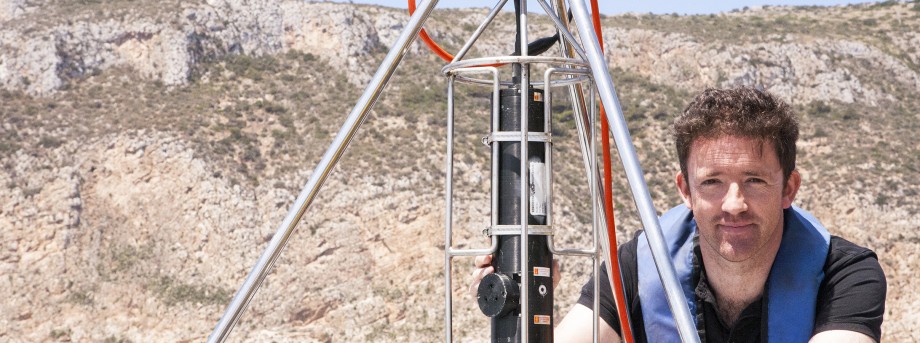The University of Nottingham
 Exchange online
Exchange online
Research Exchange
Shedding light on ancient relics of war

On March 10 241BC a huge naval battle took place off the coast of Sicily between the Romans and their archenemies the Carthaginians. It put an end to the First Punic War and set the Roman Republic on its militaristic path to becoming an Empire.
The Battle of the Egadi Islands is the first ancient naval battle site ever discovered and it is now being surveyed in minute detail.
Directed by the Soprintendenza del Mare and RPM Nautical Foundation, the Egadi Island Survey was established nearly 10 years ago. They have been joined by underwater archaeologist Dr Jon Henderson, who is using some of the latest underwater archaeology techniques to help survey and map this remarkable battle site.
Working at depths of between 40 to 120 metres they are surveying an area which currently stands at some five square kilometres. It is littered with the relics of this decisive war. Bronze helmets, amphora, weapons and — most importantly — ancient bronze battle rams are being lifted from the seabed and preserved.
Dr Henderson, of the University’s Department of Archaeology, said: “It is quite surprising that despite all the literary references and the importance of naval battles and sea power in the ancient world we have never found a battle site before. What makes this project so exciting is that this was an important engagement between the Romans and the Carthaginians which ultimately provided the Romans with a springboard to go on and take over the whole of the Mediterranean.”
Historical documents placed the battle near the island of Levanzo, west of Sicily. According to the literature the battle was short — just a few hours long. The Romans lay in wait trapping the Carthaginians and blocking off their sea route in a sudden attack.
Previous attempts to find the exact location had been focused in shallow water close to the island. But stories told by old Sicilian divers of lines of ancient lead anchors lying on the seabed, off the Egadi Islands to the west of Trapani off Sicily’s northwest coast, proved invaluable. They guided Sebastiano Tusa, Professor of Pre-history and Soprintendenza del Mare, Sicily to the battle site.
Professor Tusa said: “The stories led me to speculate where this battle might have taken place. To prove my hypothesis I carried out a series of dives and discovered 50 anchors. Local fishermen brought up a bronze helmet from the same area and together with the discovery of the first ram my hypothesis became theory. Now, working with RPM Nautical Foundation we
have discovered 11 rams.”
The research vessel Hercules bristles with some of the very latest underwater survey technology. An ongoing multi-beam survey, together with remotely operated vehicle (ROV) verification, is producing an accurate map of the undersea geography of the site. And revealing an astonishing array of shipwrecks, weapons, armour and helmets. But most exciting of all is the growing collection of ancient battle rams — of which there were only three in the world before this survey began.
Dr Jeffrey Royal, of the RPM Nautical Foundation, said: “Much of what we knew about ancient naval battles and ancient warships was based on historical text and iconography. We now have physical archaeological data, which will significantly change our understanding. Cast on the bow of the ship, these rams were not just used as weapons — they were there to protect
the ship. The discovery of these rams will help us learn more about the size of these ships, the way they were built, what materials were used, as well as the economics of building a navy and the cost of losing a battle.”
Dr Henderson is using scanner technology developed for the marine offshore industry to map the site in even more detail. It was tested out in shallow water during his work on Pavlopetri — the world’s oldest known underwater city. It is now proving its worth in much deeper waters. The technology he has introduced to the world of underwater archaeology will survey an area of up to 50 to 60 metres across in minute detail and produce plans for archaeological purposes.
He said: “The sector scan produces a geometrically accurate plan of the seabed in matter of minutes. To fully understand the remains on the seabed and ultimately reconstruct the actual battle itself it is vital that we record the exact positions of the wreckage. I think this technology has the potential to transform the way underwater sites are surveyed in the future.”
The area is so rich in archaeological data that the survey team believe it could take decades to fully survey and analyse the data from this site.
Leave a Reply
Other

Top prize for quantum physicist
A University of Nottingham physicist has won a prestigious medal from the Institute of Physics for […]

Zero carbon HOUSE designed and built by students comes home
Design and construct a low cost, zero carbon, family starter home, transport it to Spain, build […]